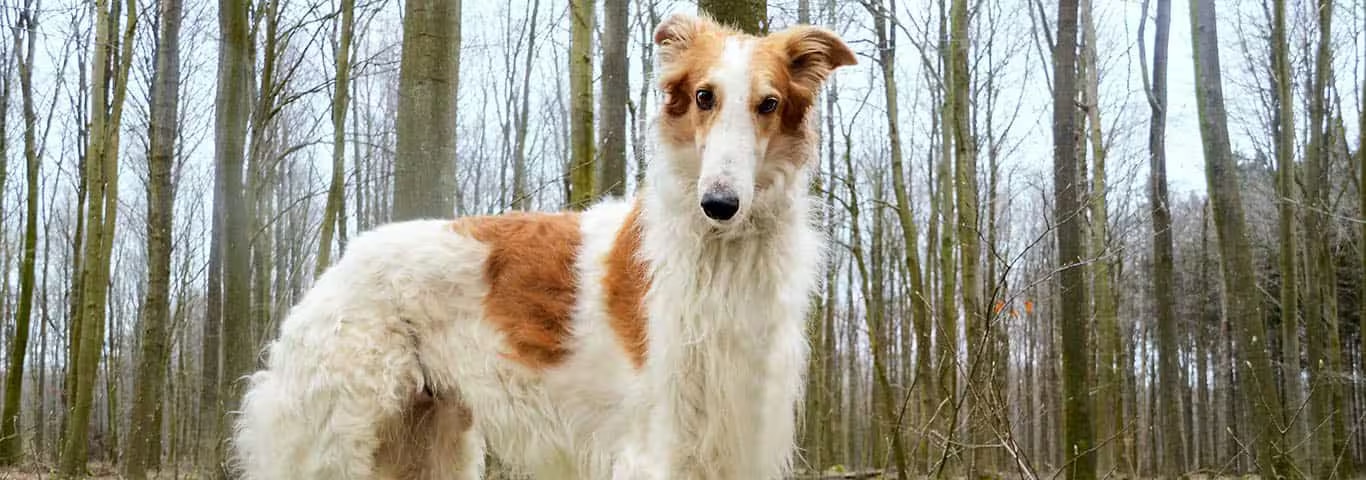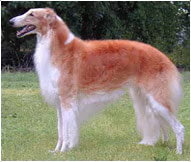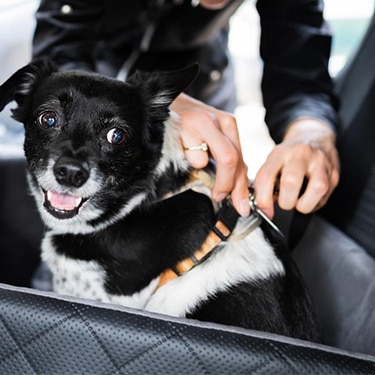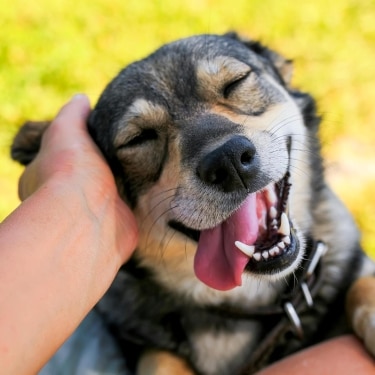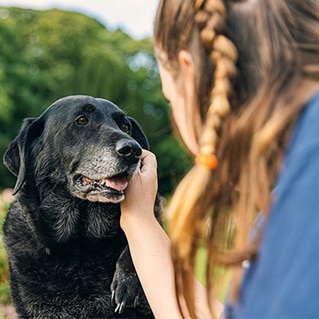Like a typical greyhound, it has family traits of long, slender legs, relatively narrow body, deep chest, tucked abdomen, arched loin and long tail. His head is extraordinarily long and narrow. The borzoi's grace is evident in his every move.
Although smaller than an Irish wolfhound, borzoi are still very large, and especially tall, dogs. The males are at least 28 inches tall, and females at least 26 inches. Realistically, these would be considered very small borzoi. Today most males are probably 32 to 34 inches tall, with the females somewhat smaller. They are narrow, though, so that they weigh less than other dogs of comparable height. Males average 75 to 105 pounds (34 to 47 kilograms), and females 60 to 85 pounds (27 to 38 kilograms). The coat is rather long and somewhat silky, either curly, wavy or straight. Although all colors are acceptable, white with patches is most often seen.
Borzoi know they are aristocrats, but they also hide a bit of court jester. They are good-natured, gentle and calm, seemingly amused at whatever entertainment comes their way. They are happiest when that entertainment involves running. True to their heritage, borzoi are avid hunters, and will chase any small fleeing animal. They cannot be called off the chase, and they are oblivious to cars.
Obedience lessons are apt to be met with a sense of humor, but borzoi will humor you and do some semblance of what you ask them. If you make it worth their while and a lot of fun, they can actually turn in a fairly decent performance. But they will always remind you they are doing it only as a favor to you. Like most sighthounds, borzoi are very sensitive and are one family dogs. They are friendly, but not gregarious, toward strangers. They are adequate watchdogs, and will bark. That's about all they will do, and they are not very good at actually protecting you.
Borzoi need room to stretch out, inside and out. They are not a breed that can curl up in a corner or exercise in a pen. Their owners need to consider the larger feed, medicine and boarding bills a large dog entails. Their laid-back nature means that they are quite content to lounge about most of the day. But these dogs are athletes and need to push themselves running every day.
As would be expected from a Russian dog, borzoi enjoy cold weather, and often lie on hard, cold surfaces. Their coat sheds, especially once a year. They should be brushed two to three times a week. Some borzoi pant a lot, which can be unnerving to some people.
To catch the Russian wolf, a dog would have to be fleet-like a greyhound. But this greyhound would have to be covered with a thick coat to brave the frigid winds, a coat that was probably infused from a type of Russian sheepdog. And he would have to be strong and courageous, traits gained from crosses to Russian bear hounds. To capture the hearts of the Russian aristocracy, the dog would have to be beautiful — and the borzoi's beauty is not borrowed from any other breed.
The breed was in its formative stages in the Middle Ages; in the 16th century the first breed standard was presented. A borzoi hunt was among the grandest hunting events ever staged, the hunting party often arriving in a huge trainload of dogs, horses, serfs and nobility. Two or three matched borzoi were unleashed on a wolf that had been flushed into the open; the borzoi had to sprint to catch it before it reached cover on the other side of the field. Their job was to hold the wolf until the huntsman came to bind it. The Russian aristocracy kept grandiose kennels of hundreds of borzoi. Most of these dogs were killed as hated symbols of the Russian rulers after the Russian Revolution. The borzoi of today descends from a few that escaped death as well as the descendents of dogs that had been given as gifts to foreign dignitaries.
In America the borzoi (initially known as the Russian wolfhound) found a second claim to fame as an aristocratic model and status symbol. Those who know the breed personally, however, realize its greatest claim to fame is as a lovely and loving companion.
Adopt a pet. Change a life.
Are you prepared to adopt a pet? Use these tools to make sure you are ready for the commitment.
Adopt a pet. Change a life.
Are you prepared to adopt a pet? Use these tools to make sure you are ready for the commitment.












